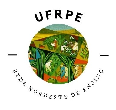Banca de QUALIFICAÇÃO: SIQUELE ROSEANE DE CARVALHO CAMPELO
Uma banca de QUALIFICAÇÃO de DOUTORADO foi cadastrada pelo programa.STUDENT : SIQUELE ROSEANE DE CARVALHO CAMPELO
DATE: 29/05/2024
TIME: 10:00
LOCAL: Sala virtual -Google Meet
TITLE:
RELATIONSHIPS BETWEEN INITIAL TEACHER TRAINING AND
INNOVATIVE PRACTICE
KEY WORDS:
Initial Training, Pedagogical Praxis, Innovation in Education.
PAGES: 149
BIG AREA: Ciências Humanas
AREA: Educação
SUBÁREA: Ensino-Aprendizagem
SPECIALTY: Métodos e Técnicas de Ensino
SUMMARY:
ABSTRACT
How are the training trajectories of teachers characterized in the context of schools that are part of the Innovation in Education Movement? Based on this concern, this research has the general objective of analyzing the relationships between initial teacher training and innovative pedagogical practice from a teaching perspective. As specific objectives we seek: to identify innovation factors in the pedagogical political project of schools that are part of the Education Innovation Movement; analyze the relationships between initial training and innovative teaching practice; and propose innovation indicators covering dimensions and levels of impact for initial teacher training, based on innovative praxis in basic education. The theoretical contributions include the dimensions of innovation in the context of teacher training, as well as innovation in pedagogical practice based on the assumptions of complexity and dialogicity. The methodological design relates different sources of data as a way of expanding the possibilities of understanding, using the interactive methodology as a reference, a hermeneutic-dialectical tool that favors the processes of data collection and analysis, allowing a systemic view of the problem investigated. . Thus, document analysis, the written training narrative and the Hermeneutic-Dialetic Circle (CHD) technique will be used as procedures for data collection. The data analysis perspective will be inspired by the Dialectic-interactive Hermeneutic Analysis (AHDI) proposed by Oliveira (2016), as well as the foundations of the Hermeneutic-Dialetic Analysis (AHD) developed by Minayo (2008). Thus, we envision a theoretical-methodological path which, by situating the context in which the speeches emerged, seeks to rescue the essence and individual social history. After defining the theoretical and empirical categories, these will be linked to the information collected through different data collection instruments, and then units of analysis will be organized into analytical frameworks, relating cores of meaning, speech by social actors and syntheses horizontal and vertical.
COMMITTEE MEMBERS:
Presidente - ***.486.147-** - MARIA MARLY DE OLIVEIRA - UFRPE
Interna - CARMEN ROSELAINE DE OLIVEIRA FARIAS
Interna - ***.451.884-** - MARIA DE FÁTIMA GOMES DA SILVA - UPE
Externo à Instituição - IVANDERSON PEREIRA DA SILVA - UFAL
Externa à Instituição - MARIA AUXILIADORA SOARES PADILHA




